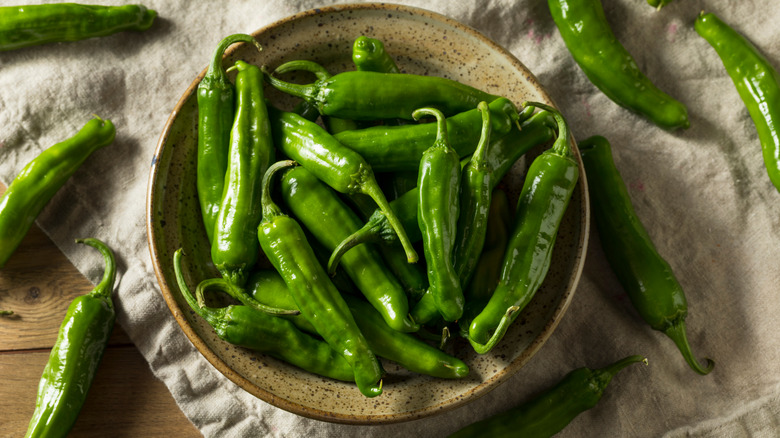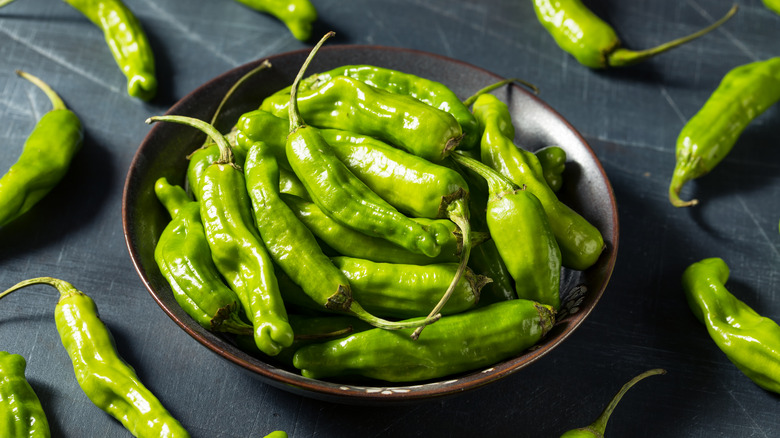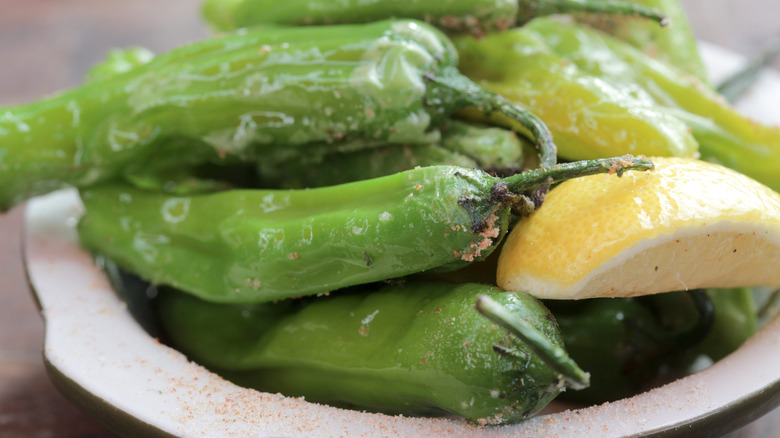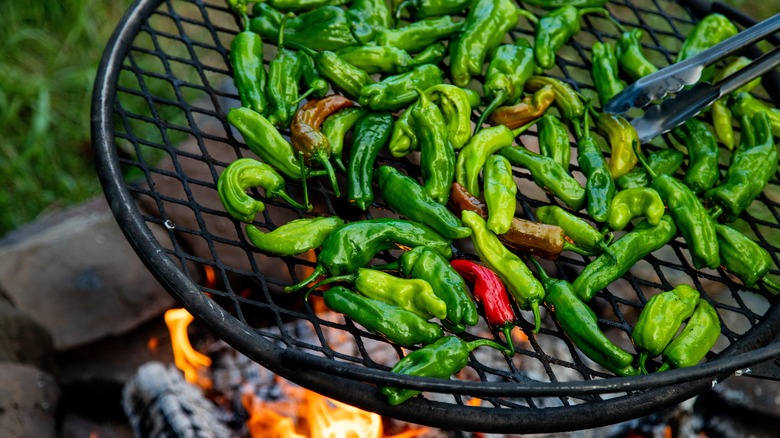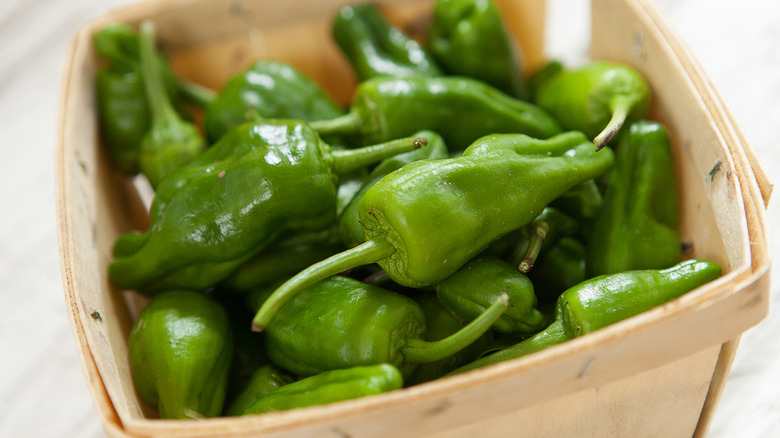What Are Shishito Peppers And How Do You Cook Them?
Peppers have really been enjoying a moment for some time now. From charred poblanos to Anaheims, and from classic bell peppers to jalapeños, these vibrant vegetables seem to be everywhere on trendy restaurant menus. This doesn't even account for the increased availability of international cuisines in many parts of America, which has brought ingredients like chili peppers even further into the mainstream. It's truly a golden age for pepper lovers.
Among the rising stars in the pepper world is a Japanese variety you may have heard of: shishito peppers. These vibrant green peppers have become the latest sensation on restaurant menus, and you might have even tried them yourself at some point as an appetizer. They generally have a mild flavor that pairs well with classic East Asian sauces, but be cautious — every so often, one will be surprisingly spicy. Don't be intimidated, though. As it turns out, you can absolutely cook shishito peppers yourself, and you shouldn't hesitate to broaden your culinary horizons by doing so.
What are shishito peppers?
Shishito peppers are long, thin, and bright green, native to Japan. The term "shishito" is a combination of "shishi," which means "lion" in Japanese, and a truncated form of "togarashi," meaning "chili pepper." They are also known in Japan as "lion's head peppers," presumably because to some, the tip of the pepper resembles a lion's head. Shishitos were developed from pimientos de padrón, a type of chili pepper popular in Spain and introduced to Japan in the early 16th century.
Although shishitos get their name from Japan, they are now popular in more than just Japanese cuisine, and feature prominently in Korean and Thai dishes. This isn't surprising; while each of these cuisines is clearly distinct, there's enough overlap in flavor profiles that ingredients from one culture often appear in another's food. In Korean cuisine, they're known as "kkwari-gochu," which translates to "ground cherry pepper," a name inspired by the wrinkled surface of the pepper that resembles ground cherries.
What do shishito peppers taste like?
Shishitos are generally slightly sweet and somewhat similar to bell peppers. Compared to other types of peppers, shishitos are surprisingly mild, registering only 50-200 Scoville units. For context, a jalapeño ranges from around 2,500 to 10,000 Scoville units, while a habanero falls between 150,000 and 325,000 units — and those aren't even close to the spiciest peppers available. This means that even those who aren't fans of spicy foods can enjoy shishitos most of the time. Their mildness also allows them to pair well with stronger flavors like ginger, lime, and soy sauce.
However, there is one notable caveat: For some reason, one in every 10 to 20 shishito peppers is significantly spicier than its peers. While the exact reason remains uncertain, the best guess is that environmental factors such as exposure to sunlight and what time of the year they're harvested may play a role. So, be aware that while shishitos are generally mild and delicious, eating them can sometimes resemble a game of culinary Russian roulette. That said, even the spiciest shishito is roughly equivalent to a low-grade jalapeño, so you're likely safe either way.
How to cook with shishito peppers
Peppers are generally easy to cook with, and shishito peppers are no exception — in fact, they might be even easier to prepare than most. This is because you don't have to break them down to moderate their flavor. A popular way to enjoy them is to blister them over direct heat, sprinkle some salt, and eat them as is. You could also make a dipping sauce — ginger and lime make a great combination — but they are essentially ready to be eaten as a snack.
That's far from the extent of their culinary versatility, however. They pair well with citrus flavors like lemon and lime, and complement classic East Asian ingredients like ginger and soy sauce. Besides blistering, they also respond well to steaming, pan-frying, or wok cooking. If you choose to use direct heat methods, make sure to cook them quickly over high heat to avoid overcooking.
Unusually for a pepper, shishitos also adapt well to tempura frying, thanks to their relatively mild flavor compared to other members of the "Capsicum annuum" family. Just be cautious of that occasional spicy outlier.
Where to buy shishito peppers
Shishito peppers are becoming increasingly common in America, and in any major city, you can find them at most major grocery chains. In more rural areas and smaller cities, though, you'll have to work a little harder to locate them. If you have access to a specialty grocery store like a Japanese market or an H-Mart, you're likely to find them there. You can also order them online at retailers such as Amazon, as they tend to travel well. And if you're wondering, there's no way to determine which shishito peppers will turn out to be spicy just by looking at them; you'll simply have to take your chances.
Regardless of how you acquire them, shishito peppers are worth trying if you haven't had the opportunity. Their milder nature shouldn't intimidate you, even if you're unfamiliar with them. Go ahead, treat yourself and expand your culinary horizons; you won't regret it.
